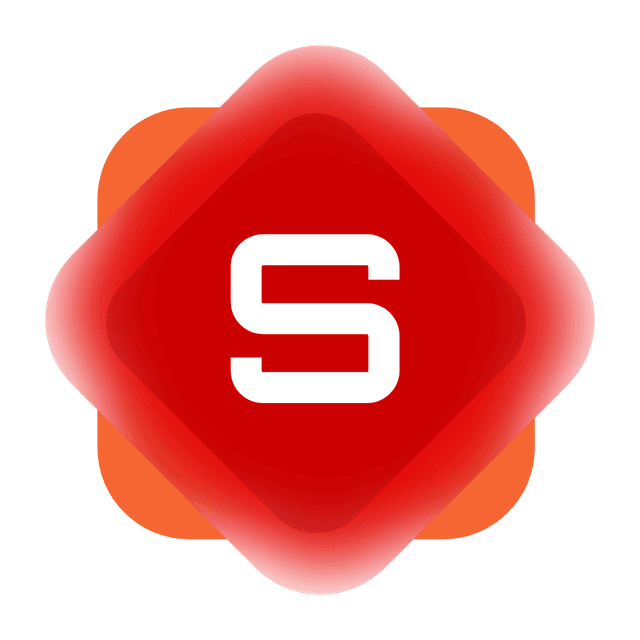
Did you know?
The dates 4/4, 6/6, 8/8, 10/10, and 12/12 all fall on the same day of the week in any given year.

The dates 4/4, 6/6, 8/8, 10/10, and 12/12 all fall on the same day of the week in any given year.
True product distinction doesn't lie in flashy features but in a thorough understanding of user needs.

11 September 2023
In an era where virtually every company wants to brand itself as a tech company, the Software as a Service (SaaS) landscape feels less like a burgeoning market and more like the California Gold Rush of the mid-19th century. Miners, entrepreneurs, and fortune-seekers from all walks of life converged, each hoping to extract a piece of wealth from the land. Today's tech pioneers, armed with Python instead of pickaxes, are digging deep into the terrain of the cloud, seeking their fortune. But are they all striking gold?
Scott Galloway, in his quintessential no-nonsense approach, has often pointed out the perils of misinterpreting momentum for genius. In the grand theater of tech startups, it's easy to get caught up in the whirlwind of VC-backed valuations and seductive pitch narratives. Yet, behind the dramatic curtain of IPOs and unicorns, a more critical storyline unfolds — the quiet, persistent tug of war between genuine value creation and ephemeral tech hype.
Every other day, a new SaaS company emerges, claiming to disrupt industry X or redefine paradigm Y. Scroll through any tech news site, and you're bombarded with headlines heralding the next "disruptor." As Scott would say, "It's not disruption; it's just... Tuesday." And within this frenzied climate, it's no wonder that the same platforms that tout "groundbreaking" innovations today could vanish into obscurity tomorrow.
Remember when we were on the brink of a 3D television revolution? Or when QR codes were the undisputed future of marketing? These technologies weren't inherently flawed. But their launch into the mainstream was premature and didn't precisely correlate with a pressing market need. The crux of the matter is, too many SaaS offerings are solutions in search of problems, rather than the other way around.
Thus, when we reflect upon the landscape, we're compelled to ask: Is this furious pace of 'innovation' helping us discern the gold from the dross? Or is it just muddying the waters, making it increasingly challenging for even savvy investors and consumers to distinguish genuine value from fleeting trends?
This turbulent backdrop sets the stage for our discussion today. As the digital orchestra reaches its crescendo, we'll attempt to sift through the cacophony, spotlighting the guiding principles that can help businesses and consumers navigate the intricate maze of the SaaS world.
With the scene now set, let's dive deeper.
As we navigate the intricate corridors of the SaaS landscape, one pattern emerges with stark clarity: the chasm between companies that genuinely prioritise user needs and those that merely pay lip service to them.
Consider this: the App Store and Google Play together harbour over 5 million apps. Out of these, the average smartphone user has about 40 apps installed, but regularly uses only about nine of them daily. Let that sink in. The brutal math reveals that a large majority of apps, even those crafted with the most avant-garde technologies, are essentially digital ornaments—seldom touched and often forgotten. Why? They didn't resonate with the user's actual needs.
Drawing upon the annals of business history, there's a potent example that stands out: the story of BlackBerry. Once an omnipotent titan in the smartphone arena, BlackBerry's obsession with its unique selling proposition—the physical keyboard—blinded it to emerging user preferences. While they clung to a fading paradigm, Apple and Android tapped into the latent desire for expansive touchscreens and a universe of apps. BlackBerry's market share plummeted from 50% in the US in 2009 to less than 1% by 2016.
But, it's not just about reading the market right. It's about obsession. Obsession with understanding the nuanced, often unarticulated desires of the user. The pulsing, sometimes illogical, heartbeats beneath the cold data. It’s the kind of obsession that led companies like Slack to transform a failing gaming company into a communication behemoth, simply because they discerned a gap and fervently acted upon it.
This obsession with user needs isn’t just a business strategy—it’s a lens, a worldview. It mandates ongoing dialogues, not monologues. It demands that companies be agile, willing to pivot, and, perhaps most importantly, willing to accept when they're off the mark. It's a commitment to iterative learning, to viewing feedback not as criticism but as a compass.
However, and here's the kicker, this obsession isn't just about reactionary responses. It’s also about anticipation—sensing the winds of change before they become gales. To achieve this, companies must weave a tight-knit fabric of empathy, foresight, and innovation, always calibrated to the evolving dynamics of user needs. Anything short of this is merely navigating business waters with a faulty compass. And we all know where that leads.
The global SaaS market stands as a testament to people's insatiable appetite for on-demand software solutions. Yet, beneath it lurks a more nuanced narrative, one that depicts a disconnection—an abyss, even—between SaaS providers and their users.
For every Slack, there's a Google Wave. For every Zoom, there's a Yahoo Messenger.
Dive deeper into the analytics, and you'll uncover some sobering numbers. Gartner predicted that through 2023, 85% of effort and spending in software projects would be wasted due to a mismatch between users' needs and the product. This isn't a minor hiccup; this is a gargantuan chasm that's swallowing budgets and efforts whole.
It's not just the startups that falter here. Established giants too have felt the sting of misaligned priorities. Remember Google's ambitious social networking venture, Google+? It aimed to challenge Facebook's dominance but eventually became a case study in what happens when a product isn't rooted in genuine user requirements. Despite Google's immense resources, Google+ was shelved in 2019, largely due to its inability to resonate with a broad user base.
Moreover, in a report by Pendo, it was revealed that nearly 80% of software features are rarely or never used. Imagine the collective hours of coding, designing, and testing that culminated in features which, for the most part, became digital white elephants. Why? Because there was a communication breakdown between the developers' desks and the users' screens.
It’s not all gloom, though. There are shining exemplars in the SaaS universe—brands that have doggedly pursued the quest to align their software with user desires. Dropbox, for instance, didn't just offer cloud storage; they intuitively understood the everyday user's need for seamless file sharing and syncing. As of 2023, they boasted over 600 million users. Their secret? An unwavering focus on bridging the utility-emotion gap.
However, for the larger ecosystem, the challenge remains. It's not enough to have a groundbreaking idea. It's not even enough to have a meticulously coded product. The real game begins when SaaS providers start asking the right questions, listening intently to the answers, and crafting solutions that fill genuine voids in the user's life.
If the current statistics serve as any indication, there's a pressing need to reevaluate, recalibrate, and realign. And perhaps, in this introspective exercise, the SaaS industry will find its true north—where innovations are not just about technological prowess but about genuine, palpable user impact.
It's tempting—almost magnetic—to dive straight into a project once that spark of an idea ignites. There's a palpable energy in the air, an adrenaline rush that makes entrepreneurs and developers want to hit the ground running. Prototypes. Algorithms. Design wireframes. The product lifecycle in the world of software often takes on a rhythm akin to a thrilling, non-stop rollercoaster.
But slow down for a moment. Let’s steer away from the glittering allure of rapid product development and take a step back. Before we embark on that wild, exhilarating ride, there's a phase that many, in their haste, sidestep, often to their detriment: preliminary research.
In an age of instant gratification, patience is a rare virtue. Preliminary research isn't glamorous. It doesn't give immediate tangible results. There's no code generated, no interface designed. Yet, it's the bedrock—the foundational pillar—upon which successful products are built.
Why? Because preliminary research is about getting into the mind of the user. It's about understanding their pain points, their unspoken needs, their daily hurdles, and the tiny inconveniences that they might not even articulate but would love a solution for.
Ever wonder why products like Instagram took off with such monumental success? It wasn't just about sharing photos. Preliminary research indicated a growing desire among users for a platform that was visually-driven, easy to use, and could transform everyday moments into artistic expressions. Instagram tapped into this latent need, and the rest is history.
However, despite such success stories, the significance of early-stage research often gets overshadowed by the allure of rapid execution. According to a study by the Project Management Institute, less than 60% of organisations understand the value of the project initiation phase which involves in-depth research. This oversight can lead to costly rectifications down the line.
While BlackBerry continued to focus on their business user base in the 2000s, preliminary research elsewhere indicated a shift in user behaviour towards apps and full touchscreen devices. Apple and Android capitalized on this shift, and BlackBerry, despite its robust technology, faced a decline.
Research is not just about surveys and numbers. It’s an art. It's about empathy, observation, and a keen understanding of human behaviour. It's about reading between the lines, understanding the unsaid, and anticipating future trends. And while it might delay the coding phase by a few weeks or even months, it ensures that when the product finally hits the market, it doesn't just function—it resonates.
In the grand tapestry of product development, preliminary research might seem like a small, inconspicuous thread. But pull it out, and the entire fabric might just unravel. Embracing this often-overlooked phase could be the difference between creating a product and creating an impact.
Here’s the crux of it all: a beautifully designed, technologically advanced product that doesn't address a genuine user need is nothing more than a shiny toy. It might dazzle momentarily but will soon be relegated to the annals of forgotten ventures. In contrast, a product sculpted from rigorous preliminary research, even if seemingly simple, stands the test of time and embeds itself into the daily lives of its users.
Our current tech landscape is a graveyard of apps and platforms that promised revolution but delivered redundancy. They ignored the essence of what makes a product truly valuable: its alignment with genuine, human requirements. In their haste to join the SaaS bandwagon, many entrepreneurs forgot the one rule that matters: It's not about you; it's about the user.
As we stand at the crossroads of innovation, let this be our guiding principle. Technologies will evolve. Trends will shift. But the core human desire to find solutions to real problems? That remains constant. And if businesses can tap into this evergreen truth through diligent research and a genuine obsession with user needs, they won't just create products; they'll build legacies.
In the world of SaaS and beyond, let's prioritize substance over style, depth over dazzle, and user needs over unfounded assumptions. Because, at the end of the day, the best products don't just solve problems—they transform lives.